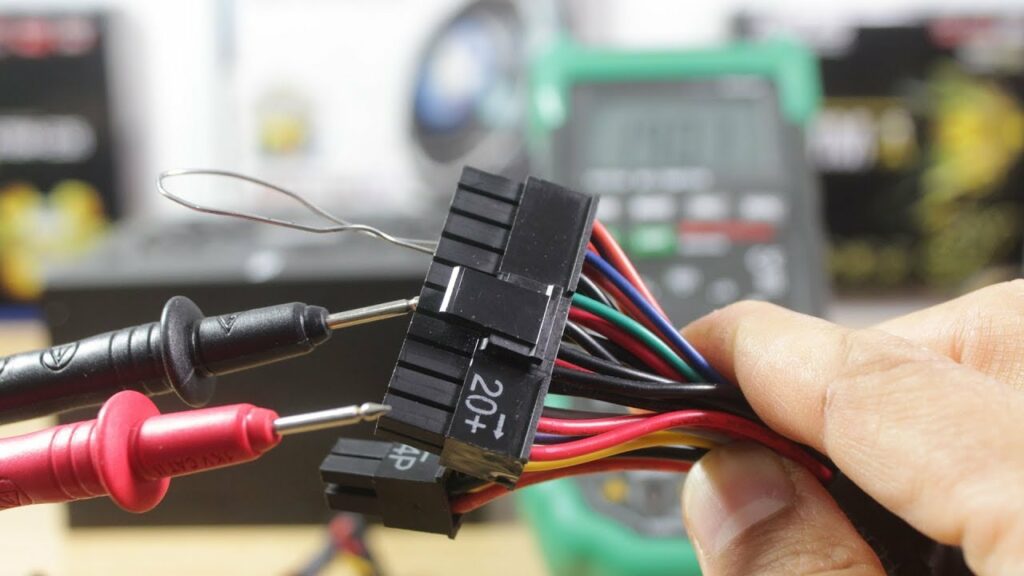How to test a power supply unit (PSU)

Testing a power supply unit (PSU) is crucial for diagnosing hardware issues and ensuring reliable performance in your computer system. This detailed guide will cover various methods and tools you can use to test a PSU, including preliminary checks, software utilities, multimeters, and dedicated PSU testers.
Table of Contents
- Introduction to Testing a Power Supply Unit (PSU)
- Importance of PSU Testing
- Signs of PSU Issues
- Preliminary Checks
- Visual Inspection
- Power Supply Rating and Compatibility
- Testing Methods
- Using Software Utilities
- Using a Multimeter
- Using a Dedicated PSU Tester
- Interpreting Results
- Understanding Voltage Readings
- Common Issues and Troubleshooting
- Conclusion
1. Introduction to Testing a Power Supply Unit (PSU)
Importance of PSU Testing
A power supply unit (PSU) converts AC power from the mains into DC power required by your computer’s components. Testing the PSU helps ensure stable and reliable power delivery to prevent system crashes, component damage, or data loss. Regular testing also aids in diagnosing hardware issues, especially when experiencing erratic behavior or system failures.
Signs of PSU Issues
- Random Shutdowns: The computer powers off unexpectedly, especially under load.
- System Instability: Frequent crashes or freezes during operation.
- Unusual Noise: Grinding, buzzing, or clicking sounds coming from the PSU.
- Burning Smell: A distinct odor of burnt electronics emanating from the PSU.
2. Preliminary Checks
Visual Inspection
- External Condition: Check for physical damage, such as bent connectors, frayed cables, or bulging capacitors.
- Dust Buildup: Clean dust and debris from vents and fan blades to prevent overheating.
Power Supply Rating and Compatibility
- Wattage Requirements: Ensure the PSU wattage meets or exceeds the total power requirements of your computer components.
- Connector Compatibility: Verify compatibility with your motherboard, graphics card, and other peripherals (e.g., SATA, PCIe).
3. Testing Methods
Using Software Utilities
- Software Tools: Programs like HWMonitor, HWiNFO, or SpeedFan can monitor voltage, temperature, and fan speed readings from sensors on your motherboard. While they don’t directly test the PSU, they provide real-time data on system health.
Using a Multimeter
- Multimeter Basics: Set the multimeter to measure DC voltage (typically 20V range) and ensure it is calibrated.
- Testing Connections: Insert the multimeter probes into the PSU connectors (e.g., 24-pin ATX, 4/8-pin CPU power) while the PSU is connected to power (but not necessarily to the motherboard).
- Reading Voltages: Measure voltages (e.g., +12V, +5V, +3.3V) against expected values. Refer to PSU documentation or manufacturer specifications for correct voltage ranges.
Using a Dedicated PSU Tester
- PSU Tester Features: A dedicated PSU tester simplifies testing with plug-and-play functionality for various connectors.
- Connecting the Tester: Insert the tester into the PSU connectors (24-pin ATX, CPU, PCIe, SATA).
- Reading Results: The tester displays voltages on an LCD screen, indicating whether they fall within acceptable ranges.
4. Interpreting Results
Understanding Voltage Readings
- Acceptable Ranges: Refer to PSU specifications for acceptable voltage ranges (+12V, +5V, +3.3V). Deviations outside these ranges indicate potential issues.
- Voltage Stability: Check for fluctuations or drops under load, which can indicate insufficient power delivery or failing components.
- Voltage Tolerances: A small variation (±5%) is generally acceptable, but significant deviations may require further investigation.
Common Issues and Troubleshooting
- Overheating: Ensure proper airflow and cooling around the PSU to prevent overheating.
- Electrical Noise: Use surge protectors and voltage regulators to protect sensitive components from electrical noise or spikes.
- Replace Aging PSUs: PSUs degrade over time; consider replacement if voltage readings are consistently out of spec or if the PSU is near its end of life.
5. Conclusion
Testing your power supply unit (PSU) is essential for maintaining system stability and preventing hardware failures. By following the methods outlined in this guide—conducting preliminary checks, using software utilities, employing a multimeter, or using a dedicated PSU tester—you can diagnose PSU issues accurately. Regular testing, especially during system upgrades or after experiencing hardware issues, ensures your PSU continues to provide reliable power to your computer components. If you encounter persistent issues or are unsure about interpreting results, consult with a qualified technician or consider replacing the PSU to safeguard your system’s performance and longevity.




